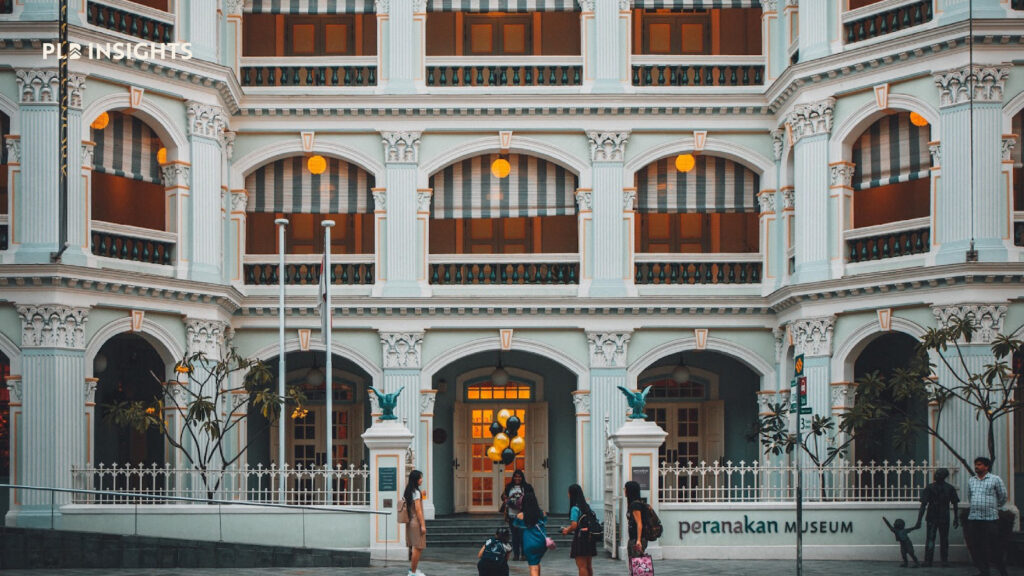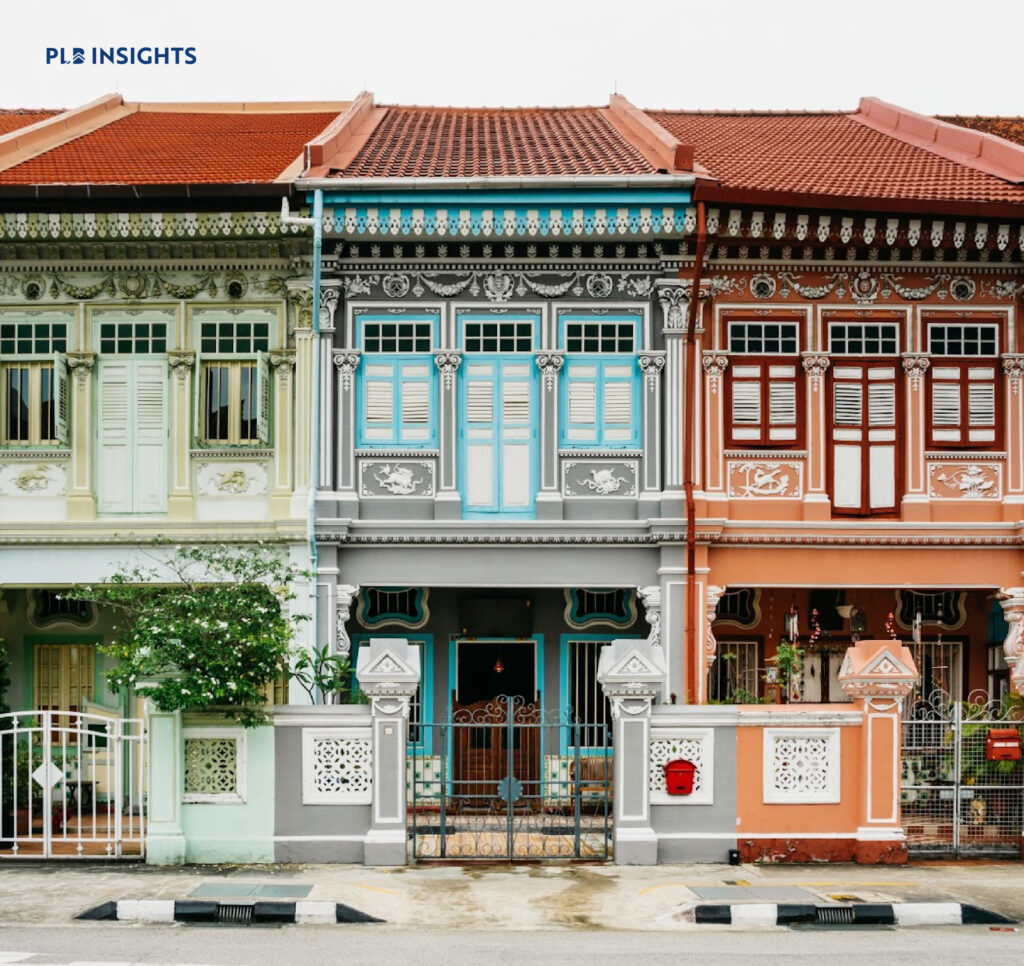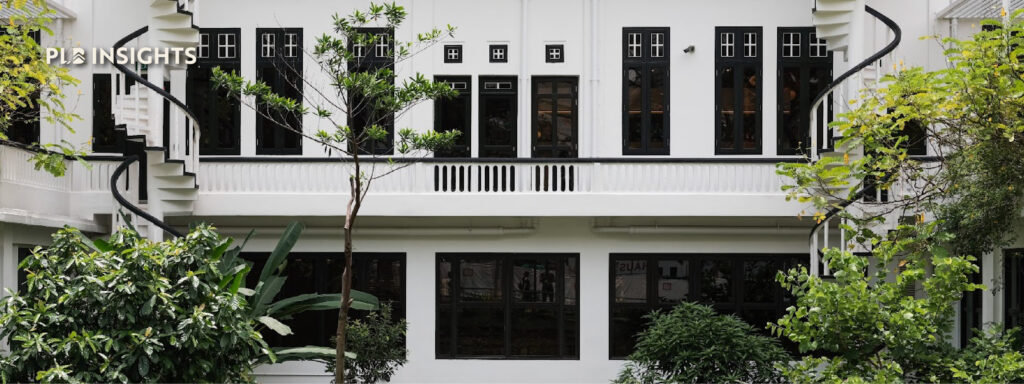
Amidst Singapore’s towering skyscrapers and futuristic buildings lies a skillfully repurposed juxtaposition of historical architecture. The colonial buildings, remnants of Singapore’s colonial era, still stand tall as witnesses to the country’s past and development.
Instead of letting them become mere relics of history, the real estate sector in Singapore has embraced change and transformed colonial buildings through careful preservation and adaptive reuse. These historical marvels are now perfectly integrated structures with aspects of both modernity and old-world charm to serve as vibrant hubs of activity.
Join us in this article as we delve into the remarkable story of how Singapore’s real estate sector creates a fusion of heritage and modernity, breathing new life into these colonial buildings.
History of Colonial Buildings and Structures in Singapore
Singapore’s colonial era began with the arrival of the British East India Company in the early 19th century and remained under British colonial rule until the early 20th century. Due to its proximity to shipping routes and natural harbour, the island was recognised as a key trading route hub by the British and had a trading post established by Sir Stamford Raffles in 1819. This was located strategically at the Southern tip of the Malay Peninsula, near the Straits of Malacca.
With this, the island attracted merchants from all over the world. As Singapore continued to flourish as a trading port, the British government slowly implemented different policies to develop Singapore’s infrastructure. This included constructing public buildings, roads and bridges.
Sir Stamford Raffles’ plan for the town, known as the Raffles Town Plan, included several areas of the city for redevelopment. Parts of the city were split into areas on the basis of different groups and ethnicities (known as enclaves). As the city’s urban landscape started to take shape under British rule, colonial architecture slowly became a prominent feature in Singapore’s buildings and infrastructure.
Colonial history is visible in the various structures that still stand today, many of which are in the Civic District along Fort Canning, the Singapore River, and the Padang. Sir Stamford Raffles’s house was also built on top of Fort Canning Hill.
Some examples of buildings from the colonial era in Singapore, include government buildings, shophouses, black and white bungalows, churches, cathedrals, and hotels. These buildings consist of architectural designs that have British, European and local influences. The Civic District and Raffles Place have most of the churches, cathedrals, clubs, hotels and government buildings. The East Coast and Katong, on the other hand, feature a mix of colonial-era shophouses and bungalows in what served as residential areas for government officials and British expatriates.

Preservation Efforts and Adaptations
Despite welcoming technological advancements and development in every aspect, one of Singapore’s essential cultural assets is its architecture. These buildings and structures tell an important story and shape the country’s identity. The country’s urban planning strategies place an emphasis on preserving these buildings and their historical value while adding modern touches to them.
The Urban Redevelopment Authority (URA) has implemented various policies and initiatives to encourage the conservation of historical structures in Singapore. These include certain guidelines for conservation, keeping an inventory of buildings and identifying which ones require conservation efforts, creating designated areas for the buildings, and providing financial incentives to redevelop these sites.
Financial Incentives
Because the Singaporean Government places such an emphasis on the preservation of historical landmarks and conservation buildings, it provides financial incentives to facilitate the adaptive reuse of these buildings.
For instance, the government offers grants to owners of shophouses to carry out renovations that keep the building and architecture in a good condition. Similarly, for its historical significance and heritage, the Golden Mile Complex was proposed for conservation in 2020. For this, the URA offered incentives in the form of waivers in development charges.
Conservation Guidelines
URA has created a set of guidelines that must be followed by building owners, engineers and architects when planning to redevelop or renovate any structures that are considered conserved buildings.
For different types of buildings in different areas, the conservation guidelines are applied in varying degrees. This is determined by the location of the building as well as its historical significance. Secondary settlements, historic districts and residential districts come with different planning parameters and conservation principles which you can read about here.
Modernising Colonial Buildings: Adaptive Reuse
Alongside conserving these relics of Singapore’s past, the URA encourages the adaptive reuse of colonial buildings. This enables developers to transform the buildings into functional spaces that can be used for both commercial and residential purposes, making them fit for meeting modern needs while preserving the historical value of the place.
In doing so, buildings from the colonial era have remained sustainable and relevant throughout the years Singapore’s urban landscape has evolved. Using the guidelines mentioned above, developers ensure that key architectural features and layouts of colonial buildings are preserved. Moreover, they make use of traditional materials and techniques to maintain the historical integrity of the buildings.
After being renovated for adaptive reuse, colonial buildings are used as commercial, retail, culture and arts, and residential spaces.
Commercial & Retail Spaces

Shophouses in Singapore are well-known colonial buildings that are preserved for their cultural and historical significance. Many of these have been repurposed for commercial and retail use.
A shophouse is a mixed-use property type that typically has a commercial area on the ground floor and a residential area on the top floors, although there are some shophouses that are fully for commercial or retail use. These colonial buildings have been renovated and transformed into restaurants, cafes, art galleries, and boutiques that are open for locals and tourists to enjoy.
In a previous article, we went over the six different styles of shophouses and explored how they evolved from the colonial era to today. Areas like Kampong Glam and Little India have vibrant shophouses that showcase the heritage and history these structures hold while being great locations for customers searching for restaurants and stores.
Cultural & Arts Spaces
Another way colonial buildings have been repurposed is for culture and arts. These spaces provide venues for art exhibitions, live performances and different cultural events.

The Victoria Theatre and Concert Hall is one of Singapore’s oldest venues for performing arts. This colonial building was first built as the Town Hall in 1862 as a venue for performances, lectures and announcements. In the early 20th century, it was converted into the Municipal Office before it was used as the headquarters for the Japanese administration in World War II. In 1959, after Singapore gained self-governance, this building was used as a legislative assembly and played an important role in the early years of Singapore’s independence.
In 1979, this building was renamed as the Victoria Concert Hall. It was renovated to be used as a dedicated concert venue, and has become a prominent cultural background and a performing arts hub.
Residential Spaces

Many black and white bungalows from the colonial era have also been repurposed for both commercial and residential purposes. Their name comes from the distinctive architectural style that incorporates black timber frames and white walls. There are roughly 500 of these bungalows throughout Singapore in areas like Rochester Park, Tanglin, Changi and Sembawang.
Buildings that were home to local businessmen, European colonial families, and expatriates have now been renovated as residential property in Singapore. While the overall look of the houses cannot be changed so as to preserve the history and heritage of the buildings, tenants and owners are permitted to install additional fittings like air conditioning and kitchen upgrades. Some of these colonial buildings are owned by the state and are not for sale. They can only be rented directly from the Singapore Land Authority (SLA).
If you think a colonial house with a touch of history is a place you’d like to call home, we previously wrote about the rental process of a black and white house here.
How Does This Impact Singapore’s Real Estate Market?
Colonial buildings have a significant impact on the real estate market due to their heritage and cultural value. Here are a few factors that contribute to the increased value of colonial buildings in the real estate market in Singapore:
Limited Supply
As colonial buildings are historically significant, they are rare and often located in prime areas in Singapore. Moreover, these buildings are renovated for different uses. This means that there is a limited supply of colonial buildings that can be used for either residential or commercial purposes, making them highly sought after.
Unique Selling Point
Colonial buildings come with architectural designs and features that set them apart from modern architecture found in Singapore. Additionally, buyers know that they are investing in a building that holds years and years of history, making them incredibly unique. Neighbourhoods that surround the colonial buildings also, as a result, increase in value alongside these colonial buildings.
Unique Investment Opportunities
They may also offer investors with unique opportunities to transform colonial buildings into co-working spaces, art galleries, aesthetic cafes, and boutique hotels through adaptive reuse. This is not only great for the real estate market but also for the tourism sector as it may attract tourists and boost local businesses in and surrounding the areas.
Closing Thoughts
Singapore is a charming example of the fusion of modernity and heritage in the real estate sector. By carefully preserving the historical charm and architectural integrity of colonial buildings through adaptive reuse, Singapore enhances its cultural identity and highlights the rich culture it holds to both locals and foreigners. Moreover, it showcases the country’s commitment to preserving its history while continuing to meet the demands of an urban environment.
We hope you have enjoyed reading about the blend of Singapore’s colonial past with modernity in colonial architecture. If you are interested in diversifying your property portfolio with a relic of Singapore’s history in colonial buildings, feel free to contact us here for questions and guidance.
Stay tuned for more from PLB Insights. Until the next one!







